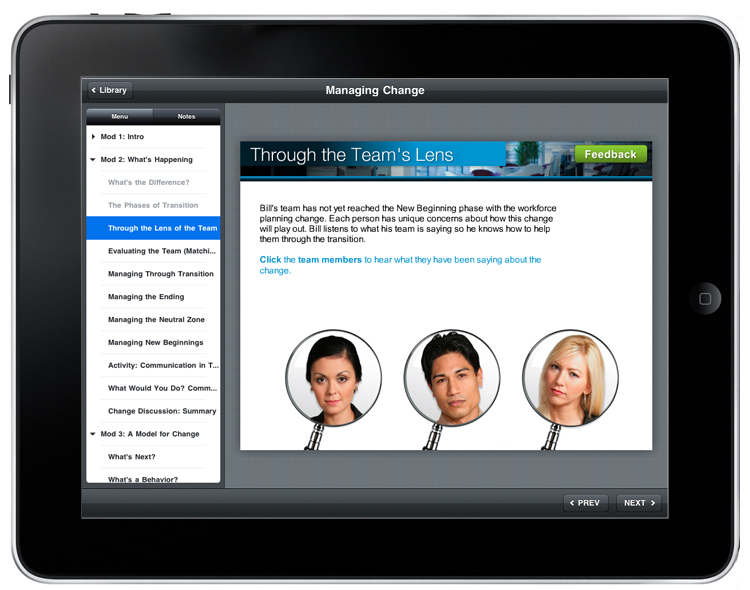The term “Rapid e-Learning” is fairly self-explanatory: Rapid eLearning is creating an eLearning course quickly and effectively, often with the aid of authoring tools that do the programming work for you. Have you ever used a WYSIWYG editor to write a blog post? WYSIWYG stands for “What You See Is What You Get,” and it’s the interface you find on blogging platforms like WordPress or Blogger—or a slew of other websites. The point is, it allows you to type and add images into a content box which, in turn, publishes the HTML code for the post. This way you don’t need to know HTML in order to blog—or even if you did know HTML, this could do all the coding for you much faster. That is what it’s like to use a rapid authoring tool to create an eLearning course.

The three most popular rapid authoring tools you might come across are Articulate Storyline, Adobe Captivate, and Lectora Inspire. These tools will offer you the chance to use course templates, preprogrammed interactive features, quizzes, drag-and-drop interactions, and more. Building an eLearning course with preexisting content and one of these tools is the most common use of the term rapid eLearning.
But while Rapid eLearning is, by nature, easy to use, that does not mean you always should use it. It will depend greatly on the project… and the needs of your learners.
What Rapid eLearning is NOT
Rapid eLearning is not a replacement for planned curriculum design, the same way that PowerPoint is not a replacement for a well-crafted presentation. Just because the speaker found a way to put content on slides (and pick a cool template that surely demonstrates how unique and fun they are) does not mean the tool is doing all the work. We’ve all sat through presentations that prove this point. A rapid authoring tool is just that: a tool. The course still needs calculated learning design to effectively deliver the content to learners.
Rapid eLearning is not one-size-fits-all. Different authoring tools are better suited for different things—or maybe one tool does everything you need but is going to cost a fortune. There are a lot of variables at play, and buying the first product that looked cool on a list of “Top 10 Authoring Tools” isn’t going to be the ultimate solution to your training problems. There will be many times where a blended learning solution is the best option, and one eLearning course just won’t cut it.
How This Impacts Your Training Needs
Like any solution, rapid eLearning has its place. There are some courses that simply need a faster turnaround. A full-scale project could take several months. Rapid eLearning is perfect for meeting time constraints—which can also keep costs down. So ultimately, it can save you time and money. Keep in mind that it won’t save you anything if you don’t plan out your curriculum design effectively. If your eLearning course winds up like that terrible, text-filled PowerPoint I joked about earlier, then the training falls flat.
Rapid eLearning can also be a great way to branch into mobile learning solutions. Here at BLP we’ve already used Articulate Storyline to develop a mobile experience for a client. There are plenty of options for creating courses for mobile devices, like whether or not to include a master navigation menu. You can also choose whether to let learners download the course on their iPads or run it through the web. This is a decision that needs to be taken into account when discussing your LMS tracking. One of our earlier posts covered this saying:
If you are not yet using Tin Can API for tracking, you do not want to let learners download your courses. The data will not be passed back to the LMS. Unfortunately, Articulate Storyline courses that are meant to be used without an internet connection are not a good option if you need tracking with your LMS. If your LMS is Tin Can API compliant, you can work around this pretty easily.

Summary
Rapid eLearning can be a great way to save time and money, and ultimately just make the process less complicated. But you need to be honest and thorough when evaluating what you need your training to accomplish—and whether or not you can handle it with a rapid authoring tool. We use rapid authoring tools for our clients all the time, but we always stress a blended curriculum. Having years of experience under our belts helps us create the most value out of a rapid eLearning course.
If you’re considering your options for an eLearning course or general curriculum design, don’t hesitate to contact us. We’ll point you in the right direction, whether it’s rapid eLearning, mobile learning, or even learning games.


